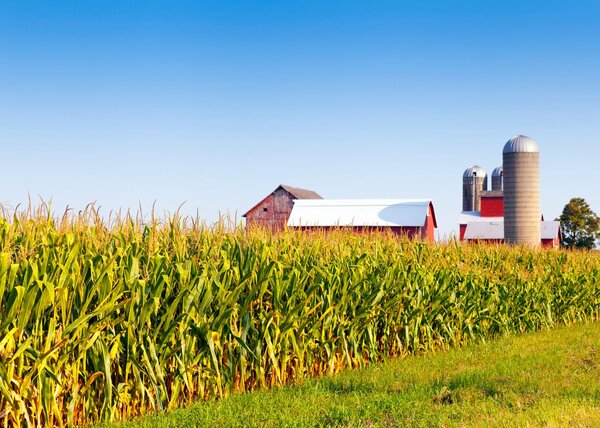Expertise
Understanding agriculture worldwide
Yelto Zimmer (agri benchmark), Thomas de Witte, Jannik Dresemann | 15.05.2023
Due to globally connected agricultural markets, it is important to understand how arable farming is practiced in other locations around the world and how competitive local cultivation of agricultural commodities is in international comparison. The agri benchmark network collects the data required for this.

In times of increasing importance of greenhouse gas emissions and the promotion of biodiversity and species protection, purely economic indicators are no longer the only relevant ones. New key indicators, for example, are greenhouse gas emissions or the use of plant protection products.
The global network of production economists agri benchmark, coordinated by the Thünen Institute and the non-profit company global networks, provides the data and information needed for such analyses. Experts from over 45 countries work together in the network. The members of the network forward data on so-called typical farms to the coordination office at the Thünen Institute; in return, each member receives access to the results of all other partners. In addition, the scientists and consultants meet once a year to discuss the latest data and developments and decide on agri benchmark's next steps.
The typical farms represent the essential part of the production conditions in a defined region of a country. The data collected includes all price and quantity information for all factors used - including a monetary valuation of family labor time. The data is collected in so-called focus group discussions by the scientific partners together with advisors and farmers. The data are used, among other things, to create so-called Crop Profiles (download below), which outline key characteristics of a culture's production in an international comparison.
Furthermore, the production costs for arable crops at different locations are calculated in order to draw conclusions on the international competitiveness of the production of agricultural commodities at different arable locations. The analysis of production costs shows that German arable farms are quite competitive internationally for most crops.
The direct link to practice is also used to evaluate policy initiatives or technical innovations in terms of their effectiveness and economic efficiency. For example, we worked with farmers and consultants to analyze whether and under what conditions extensive cropping systems, such as those practiced in Australia or the Canadian prairies, can be transferred to low-yield sites in eastern Germany (Thünen Report 6).
In another project, local expertise was used to analyze the extent to which greenhouse gas emissions can be reduced in arable farming and at what cost. In addition to other measures, the effects that can be achieved with intercropping, reduced tillage or the use of slow-acting nitrogen fertilizers were examined. In order to limit the complexity of the analysis, the most important arable crops (corn, wheat) were examined as examples. Only measures that do not lead to declines in production were taken into account, as otherwise it could be assumed that the decline in production at one site would lead to an expansion of production in other parts of the world. This is often associated with the conversion of grassland or forest to cropland, which causes additional greenhouse gas emissions. The graphic shows selected results of this study.
These abatement costs are initially reported for a period of up to 20 years (short-term). If GHG emission avoidance results from carbon storage in soil, the costs are also reported for a period for more than 20 years (long-term). Reason for this additional calculation: the accumulation of soil carbon is a finite process; after about 20 years of a certain management change (e.g. cultivation of catch crops) a new equilibrium is reached in the soil and the humus content in the soil does not increase further. This means that some of the greenhouse gas savings are eliminated, but the costs of the measures must still be borne by farmers or society. Consequently, the cost of avoidance increases compared to a (relatively) short-term view.
The case studies suggest the following preliminary conclusions:
- Measured against the CO2 price standard of current stock markets (approx. 100 USD/t CO2), only the savings measures in Iowa (USA) and Paraná (Brazil) are fully competitive.
- The measures examined for Germany prove to be very expensive, in the case of the long-term view even almost twice as expensive as the assumed CO2 price on the stock exchanges. The main reason for this is that, due to the strict regulation of nitrogen use in Germany compared to other countries, optimization of nitrogen fertilization can only be achieved at high cost and low savings. Based on the case study conducted, it would be questionable from an economic point of view if policy makers were to set up subsidy programs for CO2 savings in wheat cultivation in order to avoid greenhouse gas emissions, since higher CO2 savings could be achieved in other sectors with the same budget. However, it is unclear how representative the case studies conducted are and whether CO2 savings may be more cost-effective to achieve in other crops or other farm types. Here further investigations are necessary.
- The costs of CO2 savings in arable farming in other parts of the world, some of which are considerably lower, make it clear that a purely national perspective falls short when it comes to a global challenge such as climate change. If progress is to be made in climate protection, international agreements are needed to ensure that cost-effective CO2 savings potential is realized in other countries.
- The differences between the short-term and long-term view of the options are massive. Further work on policy advice should therefore insist that both values be reported separately.







